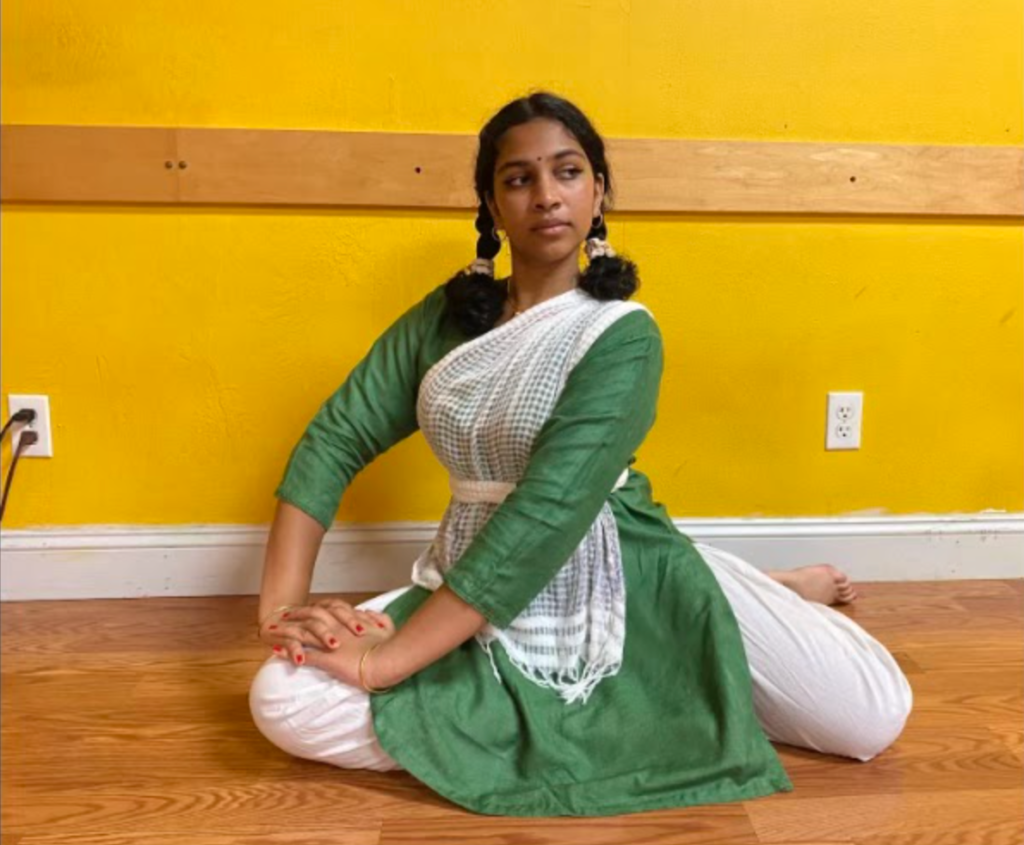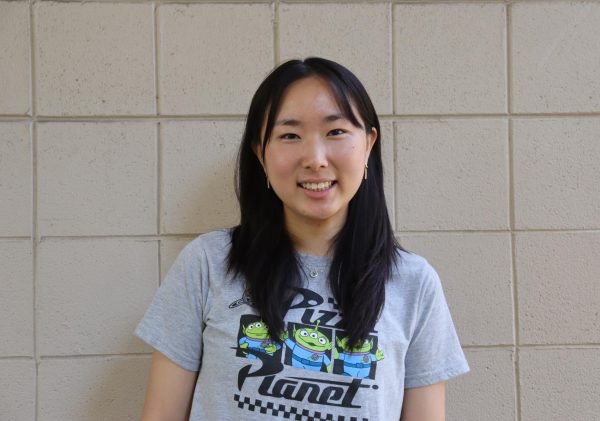For the past year, the date of August 6 has constantly been prodding sophomore Anika Ramakrishnan’s mind. She thinks about the date day and night.
On that significant day, Ramakrishnan, dressed in a carefully picked and tailored costume, along with Indian jewelry and meticulously done hair and makeup, will take the stage at the Cubberley theater for her Arangetram, a 3-hour traditional Indian solo debut. She will be performing in front of roughly 300 people.
This traditional Indian solo is a culmination of nine years of hard work, where she has been practicing Bharatanatyam, a type of classical Indian dance.
What is an Arangetram?
Arangetram, which translates to “ascending the stage,” is a solo debut of an Indian classical dancer and a rite of passage, according to the Noor Dance Academy. It showcases the training, technique and beauty used within the art form.
“Classical Indian dancing is something you start when you’re very young,” Ramakrishnan said. “For me and lots of other kids, you don’t have a passion or really enjoy it at first. But over time, when you learn more about the history of the dance and enjoy the movement and technique, you follow up with passion, which is very beautiful.”
An Arangetram can be performed with different Indian classical dance forms, including Kathak, Odissi, Mohiniyattam and Kuchipudi. The basic skills and expressions of each dance form take around 7 to 10 years to learn.
Ramakrishnan is performing Bharatanatyam, a classical Indian dance style that focuses on footwork, facial expressions, beat and technique.
“Personally, I enjoy recognizing the beats of the music while creating a structured dance to go along with it,” Ramakrishnan said.
Typically, a live orchestra accompanies an Arangetram dancer. Besides vocals, the musicians use Western instruments like flutes and violins, as well as traditional Indian instruments like the nattuvangam, tabla and mridangam.
“I’ve watched other dancers perform with the live musicians and they’re really talented,” Ramakrishnan said. “Not only are they performing alongside the dancer, but they’re also indulged in music associated with the dancer’s story.”
Arangetram performance training
Training for the Arangetram performance takes around one year, consisting of strength training and rigorous practice to perfect dance techniques and facial expressions. Ramakrishnan currently trains in the dance school Jayendra Kalakendra with her two teachers: Suganda Sreenath and Shreya Iyer. She calls them gurus, which means “teacher” in Sanskrit.
“There’s a lot of memorization involved [in the dancing] since you are taught the dances very quickly,” Ramakrishnan said. “You also need to develop the endurance to perform for several hours.”
Every Sunday, Ramakrishnan attends a one-hour private lesson to practice for her Arangetram, along with a one-hour group dance class.
In addition to practicing techniques and facial expressions in classes, Ramakrishnan also learns the historical background of the character she embodies through the dance.
“As the dancer, we can put ourselves in [characters’] shoes and feel the emotions as we dance,” Ramakrishnan said.
In addition to the weekly training, Ramakrishnan practices her individual pieces at home daily.
Rundown of an Arangetram performance
Each Arangetram performance is structured to fit the desires of the dancer. Ramakrishnan’s Arangetram will include eight dances as well as a costume change in the middle.
The dance starts with a pushpanjali, translating to “invocation to God.” The dance embodies the blossoming of a flower, and is performed with a major focus on technique.
The pushpanjali is followed by a jatiswaram, a dance that showcases beauty and rhythmic stability, and varnam, a 30-minute technique-oriented piece consisting of storytelling that must be expressed with perfection.
After a quick costume change, Ramakrishnan performs two keerthanams, dances consisting of storytelling to praise the Hindu gods and goddesses. This is then followed by a thillana, an energetic form of dance focusing on intense technique and rhythmic patterns within the music.
Finally, the dance ends with a mangalam, where the dancer performs a small piece “thanking the audience, their teachers and musicians for blessing them on the auspicious day.” The mangalam also embodies the closing of the flower, referencing the beginning of the dance where the dancer embodied the blossoming of a flower.
“Personally, I like to do [the sections of the dance] that are technique-based, where the music is slowly edging its way into the story of the performance,” Ramakrishnan said. “It’s not necessarily easy to do, but it’s easier for me to adapt to the coordination and learn about what’s going on in the story.”
Ramakrishnan plans to invite her relatives, friends and teachers to her Arangetram.
“It’s an important day that you have trained so hard for, and you would like to showcase your talent and efforts to those you care for,” Ramakrishnan said. “[You’d also want] to get blessings from elders for a successful journey as a dancer.”
With years of hard work and training, Ramakrishnan is confident in her technique. However, just like many dancers, she is nervous about simple aspects such as maintaining stamina throughout the performance.
“Training is a lot of hard work, but it’s like any dream, where the process will be tough but you’re always looking forward to the outcome,” Ramakrishnan said. “In the end when you look back, you’ll realize that it was all worth it.”



























